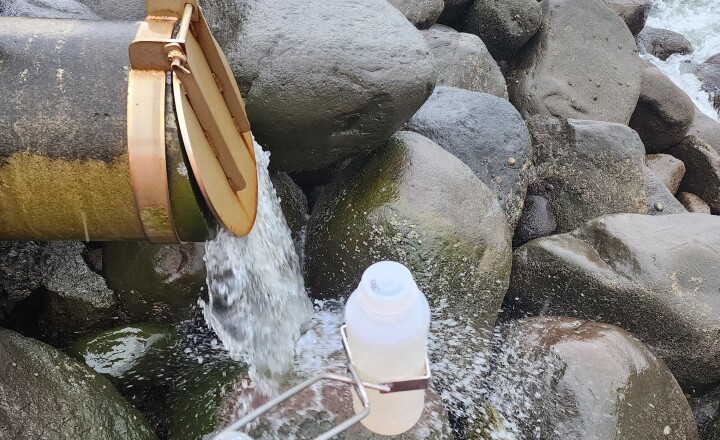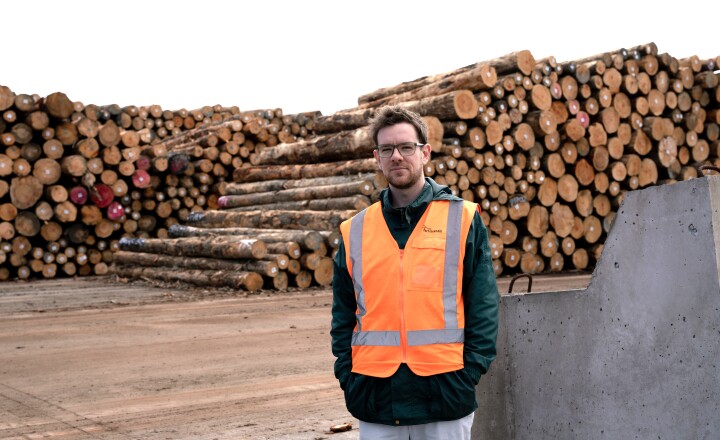
Having welcomed ships and trade for 100 years, a major project is under way to ensure Port Taranaki’s Newton King Tanker Terminal does so for at least 100 more.
Originally the Newton King Wharf, the NKTT is now Port Taranaki’s energy products wharf, a key port asset that has critical pipelines snaking through and along its length.
Late last year, Port Taranaki completed the installation of a new $16 million freshwater firewater system on the terminal, helping protect the energy customers’ pipes, loading arms and vessels, should a fire occur.
Now, a $1.5 million project is being carried out to reinforce and significantly strengthen the terminal’s seawall against sea and swell and increase stability in the event of an earthquake or large weather event.
“The original design of the seawall didn’t prevent the fines – the sand infill behind the seawall – from washing out. This has regularly caused an area near the abutment, where the wharf meets the land, to subside,” explains project manager Eugene Bajema.
“What we’ve done in the past is open it up, fill it up again and put asphalt over the top. However, as we are about to place the final monitor (water cannon) for the firewater system directly on this area, it was decided we needed to carry out a more permanent, long-term repair.”
That repair is a substantial redesign and rebuild of the seawall around the abutment area.
“What we’re doing is widening the base of the seawall at the sea floor, so the seawall starts further out in the water and is thicker as it rises out of the water to ground level. By making it wider at the base, the angle of the seawall becomes shallower, and the waves’ angle of attack is less aggressive. The energy is then dissipated, making the seawall much more resilient to wave action,” Eugene says.
The work has involved placing akmons on the sea floor and building them up, layer by layer, to just below the water surface – a depth of about 10 metres. The old rock armour above water is then removed, and relocated into the “trench” created by the akmon layer. This is followed by laying a geotextile fibre over the exposed soil, to prevent the fines escaping in future. On top of the geotextile layer light rocks and heavy rocks are placed to complete the seawall.
The new rocks have come from a quarry in South Taranaki, while the akmons – the unusual shaped concrete blocks that interlock and create armouring for wharves or breakwaters – have been made in-house by the Port Taranaki civil team.
And it has required an army of them – 500 akmons all up.
For more than a year, the civil team has been hard at work making 12 of the four-tonne akmons a week. This increased to four a day, five days a week, as the deadline loomed for the start of the project. It’s a far cry from the 40-or-so a year the team usually makes for maintenance and repair work on the port’s two breakwaters.
“It’s certainly been a big job. We rotated through and had two guys working on it fulltime – rain, hail and shine, through all seasons – and they did a great job,” says Port Taranaki civil supervisor Rob Wilson.
The akmons were placed in the water by Fulton Hogan, using a crawler crane stationed on land at the abutment and operating 24 hours a day for four days straight to reduce the impact on shipping.
“It’s a substantial project – from the design by engineers WSP, with support from the Port Taranaki engineering team, to the on-site work by Fulton Hogan, with help from the maintenance team, and the big job by the civil team to make all the akmons,” Eugene says.
“With the wharf having been in place for a century, I expect this work will help it last another 100 years at least.”
But this is just phase one of the project, with the other side of the NKTT abutment and underneath the terminal to be bolstered in the future.
“That area’s bigger, so we’re probably looking at needing 1000 akmons or more for that work.”


